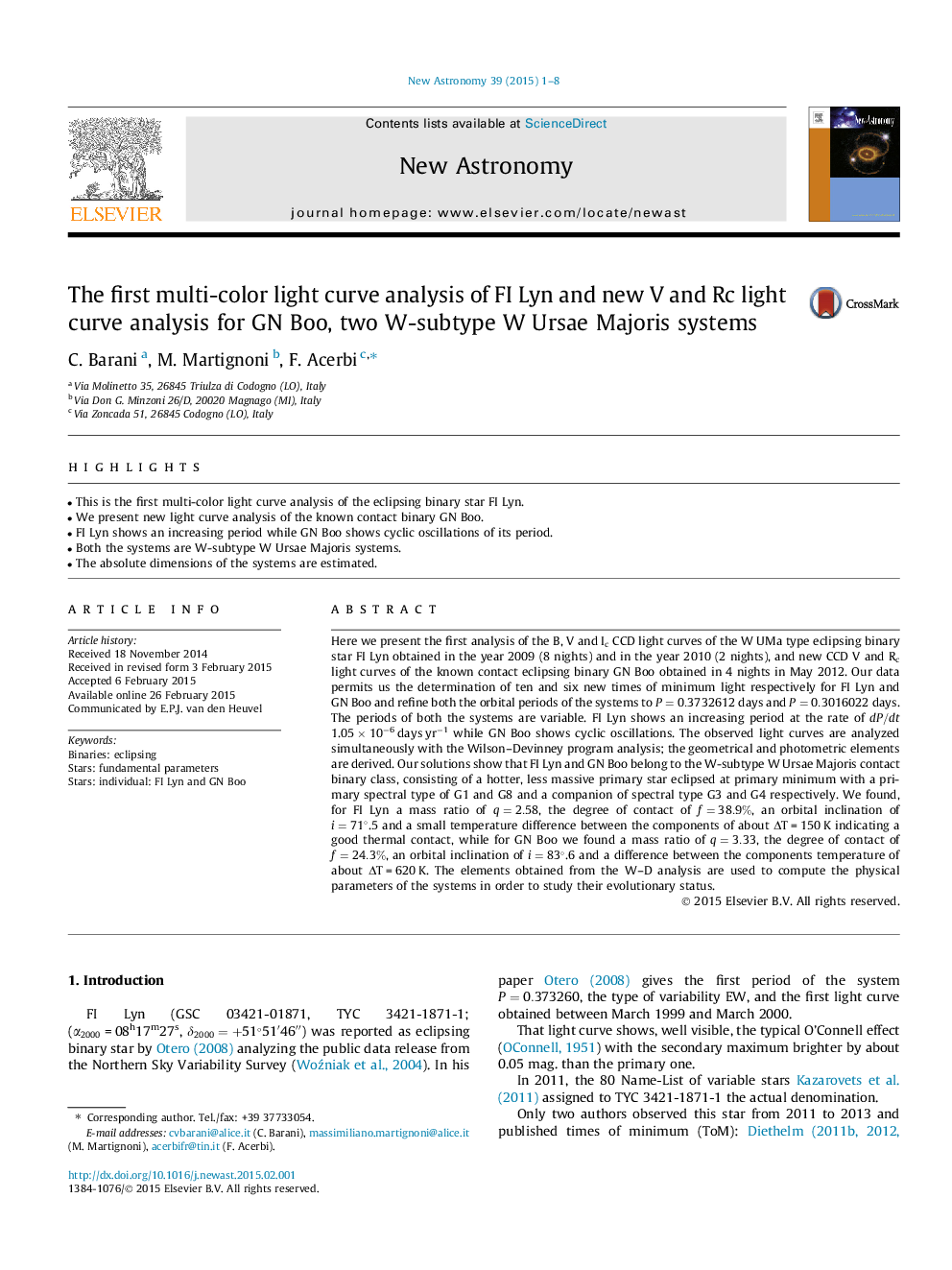| Article ID | Journal | Published Year | Pages | File Type |
|---|---|---|---|---|
| 8141487 | New Astronomy | 2015 | 8 Pages |
Abstract
Here we present the first analysis of the B, V and Ic CCD light curves of the W UMa type eclipsing binary star FI Lyn obtained in the year 2009 (8 nights) and in the year 2010 (2 nights), and new CCD V and Rc light curves of the known contact eclipsing binary GN Boo obtained in 4 nights in May 2012. Our data permits us the determination of ten and six new times of minimum light respectively for FI Lyn and GN Boo and refine both the orbital periods of the systems to P=0.3732612 days and P=0.3016022 days. The periods of both the systems are variable. FI Lyn shows an increasing period at the rate of dP/dt 1.05 Ã 10â6 days yrâ1 while GN Boo shows cyclic oscillations. The observed light curves are analyzed simultaneously with the Wilson-Devinney program analysis; the geometrical and photometric elements are derived. Our solutions show that FI Lyn and GN Boo belong to the W-subtype W Ursae Majoris contact binary class, consisting of a hotter, less massive primary star eclipsed at primary minimum with a primary spectral type of G1 and G8 and a companion of spectral type G3 and G4 respectively. We found, for FI Lyn a mass ratio of q=2.58, the degree of contact of f=38.9%, an orbital inclination of i=71°.5 and a small temperature difference between the components of about ÎT = 150 K indicating a good thermal contact, while for GN Boo we found a mass ratio of q=3.33, the degree of contact of f=24.3%, an orbital inclination of i=83°.6 and a difference between the components temperature of about ÎT = 620 K. The elements obtained from the W-D analysis are used to compute the physical parameters of the systems in order to study their evolutionary status.
Related Topics
Physical Sciences and Engineering
Physics and Astronomy
Astronomy and Astrophysics
Authors
C. Barani, M. Martignoni, F. Acerbi,
